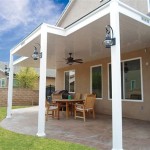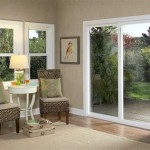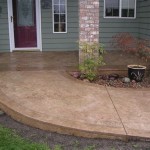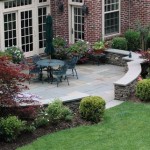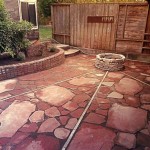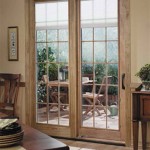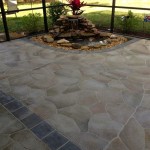Creating Elegant and Durable Pebble Tec Patio Furniture
Pebble Tec is a popular surface material often associated with swimming pools, known for its textured finish, durability, and aesthetic appeal. While primarily used for pool interiors, its inherent qualities also make it an intriguing option for creating elegant and durable patio furniture. The application of Pebble Tec to patio furniture offers a unique blend of visual interest and long-lasting performance, capable of withstanding the elements and providing a distinctive aesthetic.
Designing and constructing Pebble Tec patio furniture requires careful consideration of several factors, including structural integrity, material selection, application techniques, and sealing processes. The goal is to create pieces that are not only visually appealing but also capable of withstanding the rigors of outdoor use. This article delves into the key aspects of creating elegant and durable Pebble Tec patio furniture, focusing on the materials, methods, and considerations necessary to achieve a high-quality, long-lasting result.
Understanding Pebble Tec as a Furniture Surface
Pebble Tec is a blend of natural pebbles and modified cement, resulting in a textured surface that is both visually appealing and exceptionally durable. The specific composition of Pebble Tec can vary, but it generally comprises small, smooth pebbles of various sizes and colors embedded in a cementitious matrix. This composition provides several advantages for patio furniture applications.
Firstly, the textured surface offers inherent slip resistance, making it a safer choice for seating and tables, especially in areas prone to moisture. Secondly, the pebble and cement combination is inherently resistant to weathering, including exposure to sunlight, rain, and temperature fluctuations. The material's inherent resistance to fading and cracking contributes significantly to its longevity. Thirdly, Pebble Tec offers a wide range of color and texture options, allowing for customization to match the surrounding landscape and architectural style. The ability to integrate different pebble colors and sizes enables the creation of unique and personalized designs.
However, using Pebble Tec for patio furniture also presents certain challenges. The weight of the material can be substantial, requiring a robust structural framework to support it. The application process requires specialized skills and equipment to ensure a consistent and durable finish. Furthermore, proper sealing is crucial to prevent water penetration and staining, which can compromise the appearance and longevity of the furniture.
Selecting Materials and Constructing the Framework
The structural framework of Pebble Tec patio furniture is paramount to its overall durability and stability. The choice of materials for the framework depends on several factors, including the desired aesthetic, the weight of the Pebble Tec overlay, and the environmental conditions to which the furniture will be exposed.
Common framework materials include steel, aluminum, and reinforced concrete. Steel offers excellent strength and rigidity, making it suitable for supporting heavy Pebble Tec surfaces. However, steel is susceptible to rust and corrosion, requiring protective coatings or galvanization to prevent deterioration. Aluminum is a lighter and more corrosion-resistant alternative to steel, but it may not be as strong or rigid. Reinforced concrete provides exceptional strength and durability, but it is also very heavy and may require specialized construction techniques. Wood is generally not recommended for the primary structural framework due to its susceptibility to rot and insect infestation, although it may be used for decorative elements.
Regardless of the material chosen, the framework must be designed to adequately support the weight of the Pebble Tec overlay and any anticipated loads. This typically involves creating a grid-like structure with sufficient bracing and reinforcement to prevent sagging or deformation. The framework should also be designed to allow for the proper drainage of water to prevent pooling and potential damage to the Pebble Tec surface.
Once the framework is constructed, it should be thoroughly inspected for any defects or weaknesses. Any necessary repairs or reinforcements should be made before proceeding with the application of the Pebble Tec.
Applying and Sealing Pebble Tec for Longevity
The application of Pebble Tec to patio furniture requires careful attention to detail and specialized techniques to ensure a durable and visually appealing finish. The process typically involves several steps, including preparing the surface, mixing the Pebble Tec material, applying the material, and exposing the pebbles.
Surface preparation is crucial for ensuring proper adhesion of the Pebble Tec. The framework surface must be clean, dry, and free of any loose debris or contaminants. A bonding agent may be applied to the surface to further enhance adhesion. The Pebble Tec material is typically mixed according to the manufacturer's instructions, ensuring a consistent and workable consistency. The mixture should be evenly distributed over the framework surface, using trowels and other tools to achieve the desired thickness and texture. This can be accomplished in one layer or multiple thin layers, depending on the desired effect and the complexity of the design.
After the Pebble Tec has been applied, the pebbles must be exposed to create the characteristic textured surface. This is typically done by gently washing away the cementitious matrix using water and sponges. The timing of this washing process is critical; washing too soon may dislodge the pebbles, while washing too late may make it difficult to remove the matrix. The washing process should be done carefully to avoid damaging the pebbles or the surrounding cement. Once the pebbles have been exposed, the surface should be allowed to cure completely.
Sealing the Pebble Tec surface is essential for protecting it from water penetration, staining, and damage. A high-quality sealer should be applied according to the manufacturer's instructions. Several coats of sealer may be necessary to ensure complete protection. The sealer should be allowed to dry completely before the furniture is placed in service. Regular resealing may be required to maintain the protective barrier and ensure the longevity of the Pebble Tec surface. The frequency of resealing depends on the environmental conditions and the amount of use the furniture receives. Pressure washing the Pebble Tec surface is not recommended as it can damage the sealant and the Pebble Tec itself. Instead, use a mild detergent and a soft brush to clean the surface.
Creating durable and elegant Pebble Tec patio furniture requires a thorough understanding of the materials, construction techniques, and application processes involved. By carefully selecting materials, constructing a robust framework, and applying and sealing the Pebble Tec properly, it is possible to create pieces that are both visually appealing and capable of withstanding the rigors of outdoor use for many years.

Pebbletec Pool Finishes Care Outdoor Living Articles

Pebble Tec Problems And Solutions You Need To Know Calimingo Pool Landscape Design

Tropitone Glendale Patio Set

Pebble Tec Dc Plaster

Explore Our 5 Tips For Designing A Patio Around Fire Pit Belgard
Be Colorful Coastal Lanai

21 Simple Yet Elegant Concrete Slab Patio Ideas For A Timeless Look Artfasad

Tropitone Brasilia Lounge Chair Patio Set

Pebble Tec Dc Plaster

Pool Interiors Decking Materials Luxury Pools Outdoor Living
Related Posts

